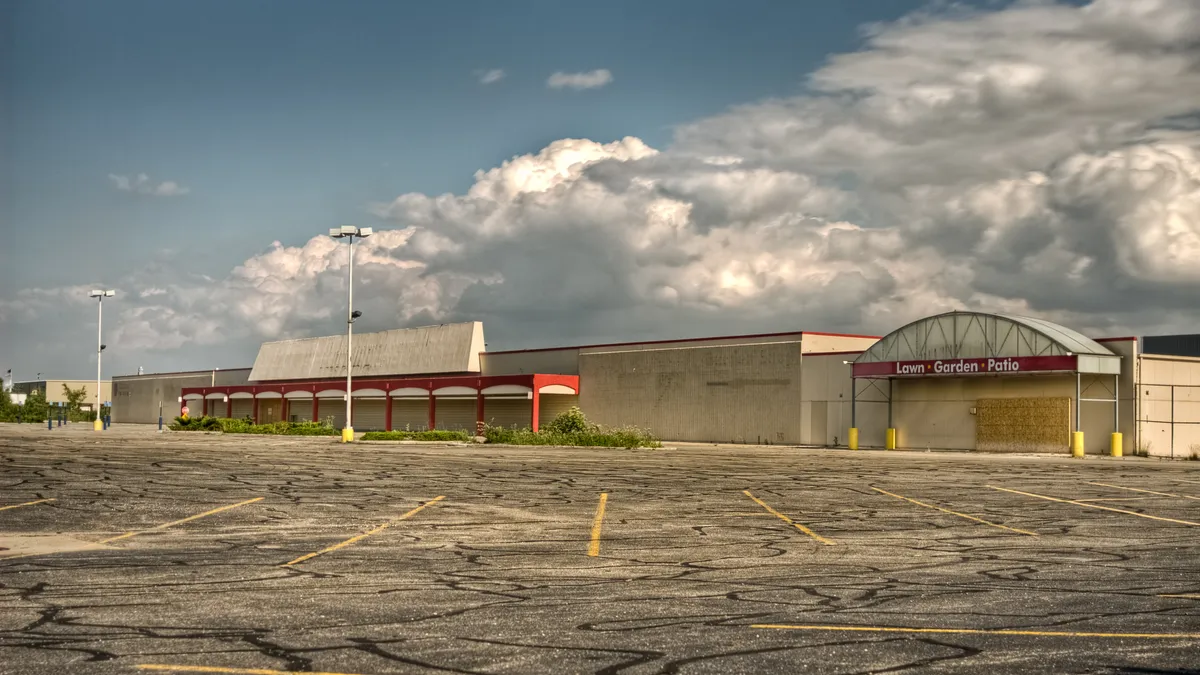Converting empty or underutilized strip malls and shopping centers into mixed-use residential and retail developments could help solve California's housing shortage crisis and allow stores to stay afloat amid the shift to online shopping, said housing experts and industry leaders during a panel at the Urban Land Institute's spring meeting last week in San Diego. However, that transformation will require cities to change their land-use policies.
A lack of housing supply has contributed to skyrocketing housing costs in many urban regions in recent years, putting the price of buying a home out of reach for lots of people and leading to many renters falling behind on payments or getting evicted.
The California Department of Housing and Community Development's 2022 statewide housing plan released last month found the state has a need for more than 2.5 million additional homes — just over 1 million of which should be for people with above-moderate incomes, and over 1 million for people with low or very low incomes.
"It's not really just affordable homes that are needed, it's across the whole spectrum," said Andrew Watkins, principal at SWA Group, a landscape architecture, planning and urban design firm, during the panel discussion. "There's really an opportunity across the board to provide housing."
"If parking land is being underutilized, residential is a better use than the asphalt lot."

Ted Lohman
Vice president of Brookfield Properties' development group
Retail space, Watkins added, is overbuilt in the U.S. — largely due to changing retail practices and the impact that Amazon and online shopping have had on consumers. Amazon's popularity has driven retailers to consolidate the size and format of their stores, with some retail centers ceasing to exist or experiencing massive square footage reductions, added Ted Lohman, vice president of Brookfield Properties' development group, which oversees the real estate investment company's mixed-use properties, during the conference.
"I think this provides a great opportunity," Watkins said. "Are there opportunities to provide retail for convenience and experience and intensify retail and commercial sites with housing?"
The solution, he said, is to replace sites that have large, underutilized retail space with developments that mix residential housing with stores, restaurants, hotels and/or office and commercial space. Doing so, Watkins said, could reinvigorate the commercial space that is already there.
About 40% of the commercial-designated zones in the zoning codes of California's 50 largest jurisdictions do not allow residential development in commercial areas, according to a November report from the Terner Center for Housing Innovation at the University of California, Berkeley.
"While there's a lot of land that's reserved for commercial purposes, a really small fraction of it has historically been converted into residential use," said report co-author David Garcia, policy director at the Terner Center.
Housing mixed with retail will provide foot traffic, which will drive sales, Lohman said. The broader mix of uses at the property will broaden that foot traffic and spread that activity throughout the week. It will also create a more walkable environment benefiting residents and the shopper, complete with parks, trails and other open space opportunities, he said.
Parking lots at shopping centers and strip malls are also often underused since today's driving habits are different compared with the 1960s and 1970s when the lots were built, said Lohman.
"If parking land is being underutilized, residential is a better use than the asphalt lot," he said.
While changing zoning codes to allow strip malls to be converted into housing will not solve the state's housing supply needs on its own, it is a piece of the puzzle, Garcia said.
Cities should proactively explore policies that encourage more homebuilding on retail and office property, according to Garcia. However, rezoning those sites takes time, money and resources, he said, so states and regional governments should also provide funds that allow cities to take on that intensive planning work. California also needs statewide standards that allow housing on commercial lots, he said — an idea that one state assembly member proposed in a bill introduced last week.
Locations in California that SWA Group targets for such mixed-use developments have highway or transit access, said Watkins. Those developments can create walkable, non-auto-oriented neighborhoods.
"They often have the capacity, they have the infrastructure for housing, they just need zoning and entitlement and public will," said Watkins.












